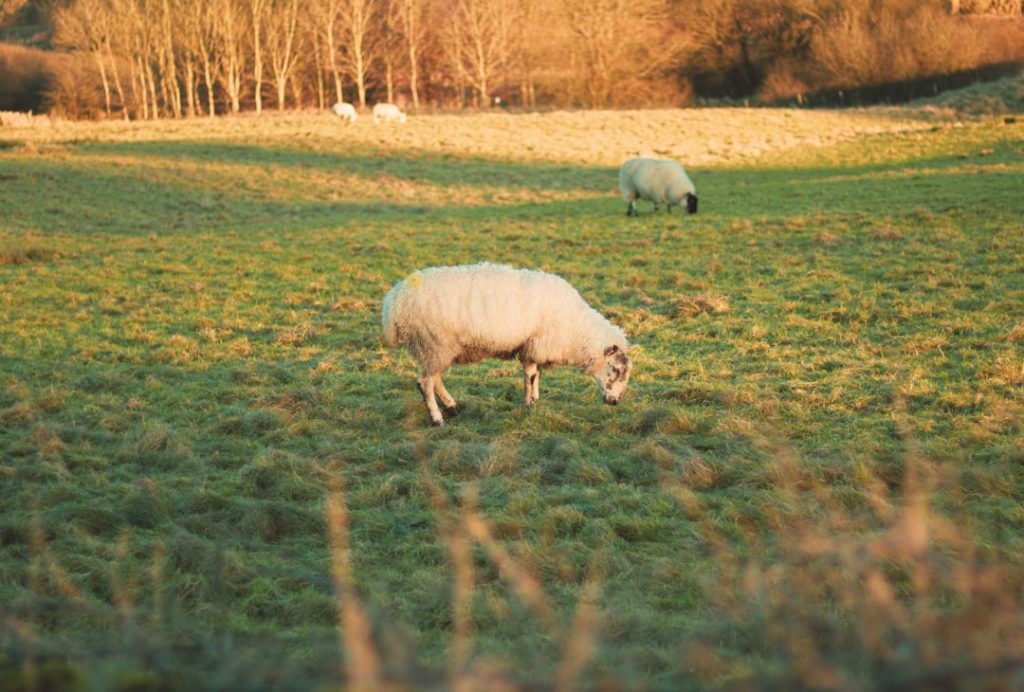Integrating goats and chickens on a farm or homestead can offer numerous advantages. Both species provide valuable products such as meat, milk, and eggs, while also contributing to natural pest control. This combination allows farmers to optimize land use and resource allocation, promoting a more sustainable and diverse agricultural system.
However, successful cohabitation requires a thorough understanding of the specific requirements and behaviors of both goats and chickens. When properly managed, the integration of these two livestock species can lead to increased farm productivity and overall animal health. Careful planning and implementation are essential to ensure a mutually beneficial arrangement that maximizes the potential benefits of keeping goats and chickens together.
Table of Contents
- 1 Benefits of keeping goats and chickens together
- 2 Housing and fencing requirements for goats and chickens
- 3 Feeding and nutrition for goats and chickens
- 4 Health and disease management for goats and chickens
- 5 Behavioral considerations for goats and chickens
- 6 Tips for integrating goats and chickens in the same space
- 7 FAQs
- 7.1 What are the benefits of keeping goats and chickens together?
- 7.2 What are some considerations when keeping goats and chickens together?
- 7.3 How can I ensure the safety of both goats and chickens when kept together?
- 7.4 What are some potential challenges of keeping goats and chickens together?
- 7.5 Are there any specific breeds of goats or chickens that are better suited for cohabitation?
Key Takeaways
- Keeping goats and chickens together can be a mutually beneficial arrangement for both animals and their owners.
- Benefits of keeping goats and chickens together include pest control, efficient use of space, and potential for increased income through the sale of eggs and milk.
- Housing and fencing requirements for goats and chickens should include separate sleeping quarters and secure fencing to prevent inter-species conflict and protect against predators.
- Feeding and nutrition for goats and chickens should be carefully managed to ensure each species receives the appropriate diet for their unique needs.
- Health and disease management for goats and chickens requires regular monitoring, vaccination, and parasite control to prevent the spread of illness between the two species.
- Behavioral considerations for goats and chickens include understanding their natural instincts and social structures to minimize stress and conflict in their shared environment.
- Tips for integrating goats and chickens in the same space include gradual introduction, providing separate feeding and watering stations, and monitoring their interactions closely to ensure a harmonious coexistence.
Benefits of keeping goats and chickens together
Complementary Diets and Foraging Habits
One of the main advantages of keeping goats and chickens together is the complementary nature of their diets and foraging habits. Goats are natural browsers and prefer to eat leaves, twigs, and other woody plants, while chickens are excellent foragers and enjoy scratching and pecking at the ground for insects, seeds, and vegetation.
Improved Pasture Management and Pest Control
By allowing goats and chickens to share the same pasture or foraging area, farmers can maximize the use of their land and ensure that all available forage is utilized. This can lead to improved pasture management and reduced reliance on purchased feed. Additionally, the presence of both goats and chickens can help control pests such as ticks, flies, and other insects, as they will actively seek out and consume these pests, reducing the need for chemical pest control methods.
Diversified Product Offerings and Increased Farm Income
Another benefit of keeping goats and chickens together is the potential for increased farm income through diversified product offerings. Goats can provide milk, meat, and fiber, while chickens can provide eggs and meat. By integrating these two types of livestock, farmers can offer a wider range of products to their customers, thereby increasing their marketability and potential revenue streams.
Improved Soil Health and Fertility
Additionally, the manure produced by both goats and chickens can be used to fertilize the soil, improving overall soil health and fertility. This can lead to increased crop yields and a more sustainable farming system.
Housing and fencing requirements for goats and chickens

When keeping goats and chickens together, it is important to provide appropriate housing and fencing to ensure the safety and well-being of both species. For goats, a sturdy and secure shelter is essential to protect them from inclement weather and predators. The shelter should be well-ventilated and provide adequate space for all goats to rest comfortably.
Additionally, a separate kidding area may be necessary for pregnant does or newborn kids. For chickens, a coop with nesting boxes and roosting perches is essential for egg-laying and roosting at night. The coop should also be predator-proof, with secure latches on doors and windows to prevent access by predators such as raccoons, foxes, or birds of prey.
In terms of fencing, both goats and chickens require secure enclosures to prevent them from wandering off or being attacked by predators. For goats, a sturdy fence at least 4 feet high is recommended, as they are known for their jumping and climbing abilities. Electric fencing may also be necessary to deter predators such as coyotes or dogs.
For chickens, a wire mesh fence with buried apron to prevent digging predators is essential, as well as a secure roof or netting to prevent aerial attacks. It is important to regularly inspect fencing for any signs of wear or damage, as well as to provide adequate space for both goats and chickens to roam and forage.
Feeding and nutrition for goats and chickens
Proper feeding and nutrition are essential for the health and productivity of both goats and chickens when kept together. For goats, a diet consisting primarily of high-quality forage such as grass, hay, and browse is essential for their digestive health and overall well-being. Additionally, goats may require supplemental grain or concentrate feed to meet their energy and protein needs, especially during periods of lactation or growth.
It is important to provide access to clean water at all times, as well as mineral supplements to ensure proper nutrient intake. For chickens, a balanced diet consisting of commercial poultry feed supplemented with kitchen scraps, grains, and greens is essential for egg production and overall health. Additionally, providing access to grit for digestion and calcium supplements for eggshell formation is important for laying hens.
It is also important to provide access to clean water at all times, as well as oyster shell or limestone for calcium supplementation. When feeding both goats and chickens together, it is important to consider their different feeding behaviors and dietary needs. Goats are natural browsers and prefer to eat leaves, twigs, and woody plants, while chickens are omnivores that enjoy scratching and pecking at the ground for insects, seeds, and vegetation.
By providing a diverse range of forage options in the pasture or feeding area, farmers can ensure that both goats and chickens have access to the nutrients they need for optimal health and productivity.
Health and disease management for goats and chickens
Maintaining the health of both goats and chickens when kept together requires careful management of disease prevention and treatment. One important aspect of disease management is biosecurity, which involves implementing measures to prevent the introduction and spread of infectious diseases on the farm. This can include quarantine procedures for new animals, regular cleaning and disinfection of housing areas, and limiting contact with wild or feral animals that may carry diseases.
Additionally, regular monitoring of both goats and chickens for signs of illness or injury is essential for early detection and treatment. This can include observing changes in behavior, appetite, or appearance, as well as conducting regular health checks such as fecal exams or blood tests. It is also important to work with a veterinarian to develop a comprehensive herd health plan that includes vaccination schedules, parasite control measures, and emergency care protocols.
Proper nutrition is also essential for maintaining the health of both goats and chickens. A balanced diet that meets their specific nutrient requirements can help support their immune function and overall well-being. Additionally, providing access to clean water at all times is essential for preventing dehydration and supporting proper digestion.
Behavioral considerations for goats and chickens

Goat Behavior and Needs
Goats are social animals that thrive in herds, so it is important to provide them with adequate space to roam and interact with each other. Additionally, providing opportunities for climbing, perching, or playing can help satisfy their natural curiosity and energy.
Chicken Behavior and Needs
Chickens are also social animals that thrive in flocks, so it is important to provide them with adequate space to roam and engage in natural behaviors such as scratching, dust bathing, and roosting. Additionally, providing opportunities for nesting and egg-laying can help satisfy their natural instincts.
Integrating Goats and Chickens
When integrating goats and chickens in the same space, it is important to consider their different behaviors and interactions. Goats are generally larger and more assertive than chickens, so it is important to provide separate feeding areas to prevent competition for food. Additionally, providing separate resting areas can help prevent conflicts between goats and chickens.
Tips for integrating goats and chickens in the same space
Integrating goats and chickens in the same space requires careful planning and management to ensure the safety and well-being of both species. One important tip is to provide adequate space for both goats and chickens to roam and forage without overcrowding. This can help reduce competition for resources such as food, water, or resting areas.
Additionally, providing separate housing areas for goats and chickens can help prevent conflicts between the two species. This can include separate shelters or coops with their own feeding areas, nesting boxes, and roosting perches. Regular monitoring of both goats and chickens for signs of illness or injury is essential for early detection and treatment.
This can include observing changes in behavior, appetite, or appearance, as well as conducting regular health checks such as fecal exams or blood tests. Overall, integrating goats and chickens in the same space can be a rewarding practice that offers several benefits for small-scale farmers and homesteaders. By understanding the specific needs and behaviors of both species, farmers can create a mutually beneficial arrangement that enhances the overall productivity and health of the farm.
With proper planning and management, the integration of goats and chickens can lead to improved pasture management, reduced reliance on purchased feed, increased farm income through diversified product offerings, natural pest control, improved soil health, increased marketability, potential revenue streams through diversified product offerings while creating a more sustainable farming system.
If you’re interested in keeping goats and chickens together, you may also want to consider turning a shed into a chicken coop. This article from Poultry Wizard provides helpful tips and guidance on how to repurpose a shed into a suitable living space for your chickens. Check it out here.
FAQs
What are the benefits of keeping goats and chickens together?
Keeping goats and chickens together can be beneficial for both species. Goats can help control weeds and brush, while chickens can help control insects and pests. Additionally, their manure can be used to fertilize the soil.
What are some considerations when keeping goats and chickens together?
When keeping goats and chickens together, it’s important to provide separate housing for each species to prevent competition for food and space. Additionally, goats and chickens have different dietary needs, so it’s important to ensure they have access to appropriate feed.
How can I ensure the safety of both goats and chickens when kept together?
To ensure the safety of both goats and chickens when kept together, it’s important to provide secure fencing to prevent predators from accessing the animals. Additionally, monitoring the animals for signs of aggression or stress can help prevent any potential conflicts.
What are some potential challenges of keeping goats and chickens together?
Some potential challenges of keeping goats and chickens together include the risk of disease transmission between the two species, as well as the potential for competition for resources such as food and water. It’s important to monitor the animals closely and address any issues that may arise.
Are there any specific breeds of goats or chickens that are better suited for cohabitation?
While there are no specific breeds of goats or chickens that are inherently better suited for cohabitation, it’s important to consider the temperament and behavior of individual animals when choosing which ones to keep together. Some breeds may be more docile and adaptable to cohabitation than others.
Meet Walter, the feathered-friend fanatic of Florida! Nestled in the sunshine state, Walter struts through life with his feathered companions, clucking his way to happiness. With a coop that’s fancier than a five-star hotel, he’s the Don Juan of the chicken world. When he’s not teaching his hens to do the cha-cha, you’ll find him in a heated debate with his prized rooster, Sir Clucks-a-Lot. Walter’s poultry passion is no yolk; he’s the sunny-side-up guy you never knew you needed in your flock of friends!







